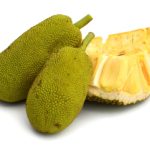Colourful fairs, musical soirees and ceremonial festivals are all part and parcel of Nabanna Utsov or the harvest Food Festival of Bangladesh
By: Munira A. Fidai
food festival
“O ma Oghrane tor bhora khete ami ki dekhechi modhur hashi,” This is a line written by Rabindranath Tagore in our national anthem, literally meaning – “O my motherland, I have seen sweet smiles (of farmers) in the full paddy fields in Agrahayan (a month on the Bengali calendar).
It is commonly said that Bangladesh is a land where there are 13 festivals in 12 months. Bengalis will agree to this fact and quite unapologetically too. Festival of food that were held sacred as prayers in the primitive society are now celebrated with so much zeal and zest that they have started to look more and more social in nature. There are kite festivals, festival of food celebration of the New Year and the spring festival, among the notable few.
One of the major food festivals that farmers celebrate in a year is known as Nabanno Utshob, or the festival of Nabo (new) and Onno (food) – new harvests. Although urbanites have very recently started to celebrate Nabanno Utshob, it has been in rural Bangladesh for as long as can be remembered.
Out of the 12 months of the Bengali calendar, Agrahayan is a month of happiness and rewards for the farmers of this land. This is the time when the “aman” rice crops are ready for harvest and the farmers can finally see the fruits of their labour with their eyes. A hefty crop signifies food safety and wellbeing for their family in the coming year. The crop is then celebrated with aplomb during food festival Nobanno Utshob.
Tasty food is prepared from the harvest of the new crops and sent out to friends and neighbours. Near and dear ones are invited home to partake in the festivities of the day. Happiness is shared and multiplied among children when fairs are arranged in villages with local vendors selling goodies and sweet snacks. Women participate in pitha (homemade Bengali sweets) making competition and immortalise the scenes of this happiness onto cloth, making Nokshikatha or traditional sheets of cloth with stitched artwork on it. The artwork needs no other language. Like Egyptian hieroglyphs, they speak of tradition and deep-rooted culture of the farmlands of Bangladesh.
The highlight of this festival is food. There is a range of pithas that are made with this new rice and rice flour. From floury, fried, sweet dumplings to pastries filled with coconut and jaggery, to mounds of fried dough balls drenched in sugar syrup or sweet milk, the festival has the power to take your taste buds to cloud 9.
In the recent years, food festival Nabanno mela has been celebrated annually on the 1st of Agrohayon in the metro city of Dhaka under the Jatiya Nabanna Utshab Udjapan Parishad. People gather at Rabindra Sharabar and other prominent locations to celebrate the Nabanno tradition. They greet this day with folk songs and dance and wear traditional clothes and jewelry. Dummies of farming equipment like ploughs are constructed and different varieties of paddy is brought for display to give the urban setting a rural turnaround for the day. The festival gets a lot of encouragement from the cultural enthusiasts of Bangladesh. Poets, singers and artists are attracted to these festivals and fairs as they serve to keep the old traditions and cultures which are at risk of being forgotten, alive.




















